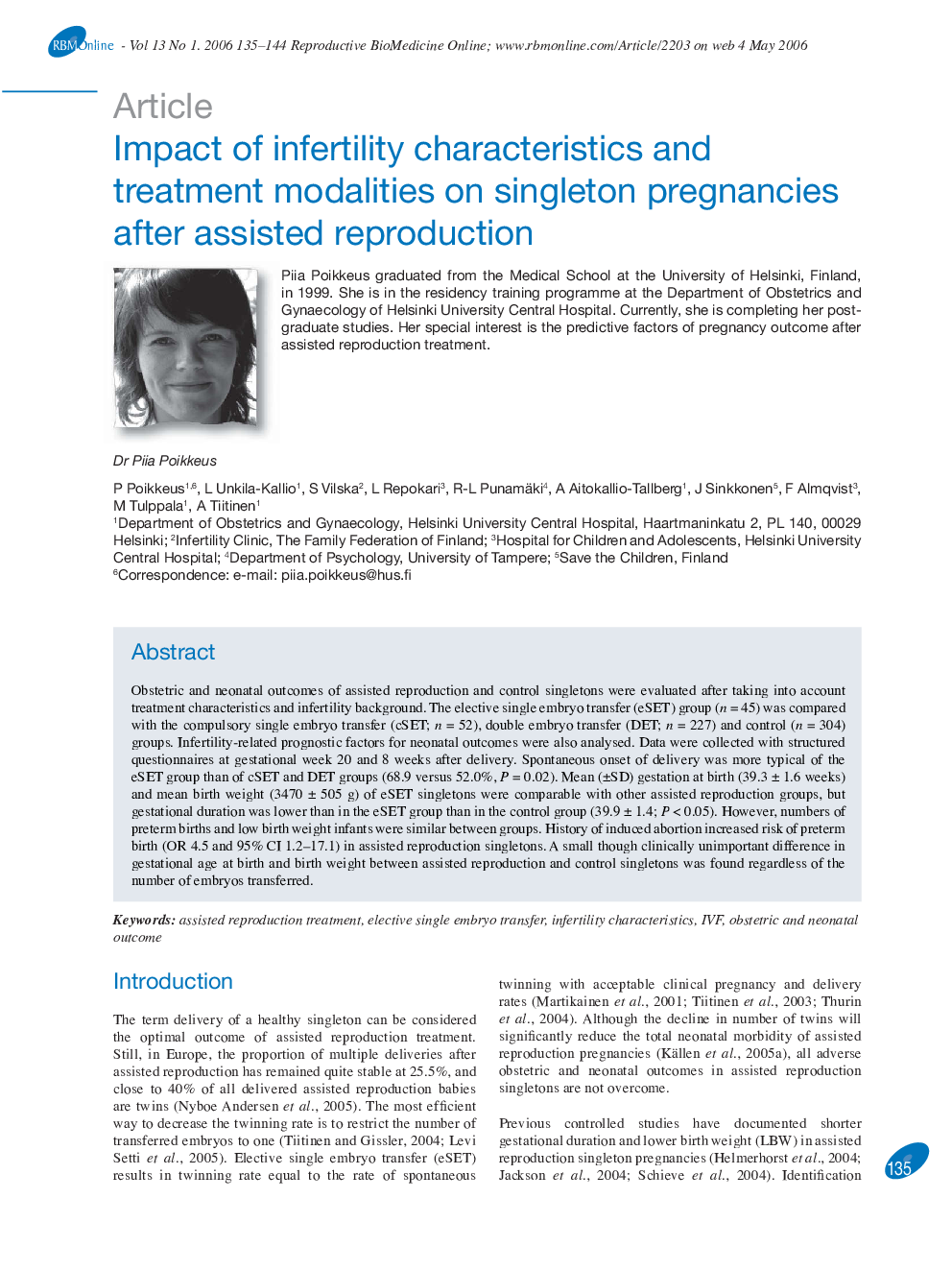| Article ID | Journal | Published Year | Pages | File Type |
|---|---|---|---|---|
| 3972932 | Reproductive BioMedicine Online | 2006 | 10 Pages |
Obstetric and neonatal outcomes of assisted reproduction and control singletons were evaluated after taking into account treatment characteristics and infertility background. The elective single embryo transfer (eSET) group (n = 45) was compared with the compulsory single embryo transfer (cSET; n = 52), double embryo transfer (DET; n = 227) and control (n = 304) groups. Infertility-related prognostic factors for neonatal outcomes were also analysed. Data were collected with structured questionnaires at gestational week 20 and 8 weeks after delivery. Spontaneous onset of delivery was more typical of the eSET group than of cSET and DET groups (68.9 versus 52.0%, P = 0.02). Mean (±SD) gestation at birth (39.3 ± 1.6 weeks) and mean birth weight (3470 ± 505 g) of eSET singletons were comparable with other assisted reproduction groups, but gestational duration was lower than in the eSET group than in the control group (39.9 ± 1.4;P < 0.05). However, numbers of preterm births and low birth weight infants were similar between groups. History of induced abortion increased risk of preterm birth (OR 4.5 and 95% CI 1.2-17.1) in assisted reproduction singletons. A small though clinically unimportant difference in gestational age at birth and birth weight between assisted reproduction and control singletons was found regardless of the number of embryos transferred.
